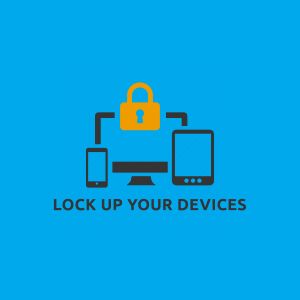Many companies these days allow employees to use mobile devices and laptops to get work done remotely and on the go. In 2018, for instance, the majority (nearly 70 percent) of businesses supported Bring Your Own Device (BYOD) policies and programs, according to research by Frost & Sullivan.
While this practice comes with plenty of advantages like increased productivity, it also creates new points of vulnerability for corporate networks. One relatively common scenario that can lead to a data breach is a lost or stolen device. If a mobile device with work-related apps and data on it falls into the wrong hands, the results could be disastrous. That’s why it’s vital to ensure all of your team members’ devices are encrypted.
If you’re not already familiar with and using device encryption to protect your organization and your clients, here are the answers to a few questions you might have about this security measure.
1. How does device encryption work?
Encryption, in general, involves taking data or information and scrambling it to make it indecipherable to third parties who don’t have the key or password to decrypt it. Encrypting a device means making it so that only authorized users can access the data on it.
2. Why should I encrypt my devices?
There are numerous reasons why your company should ensure every device employees use for work is properly encrypted. Here are just a few of the most compelling arguments for device encryption:
Data breach avoidance: You’ll lower your chances of experiencing a costly and reputation damaging breach if a device gets lost or stolen.
Compliance: For companies that must secure sensitive data to comply with federal or industry-specific regulations, a lack of encryption that leads to a data breach could lead to fines or sanctions.
Reputation enhancement: Just as a lack of security can cost you customers, proactively implementing cybersecurity tactics like encryption can be a selling point and attract new clients.
Stress reduction: It’ll put everyone’s minds at ease if they know that a lost device won’t necessarily spell doom for the organization.
3. How can I activate device encryption?
To see if a device has encryption enabled, you should check the settings or system preferences, according to the Gizmodo article “Why You Should Be Encrypting Your Devices and How to Easily Do It.” Many smartphones these days are encrypted by default, but it’s still best to check.
The best way to secure a device like a laptop is to encrypt the hard drive. Otherwise, someone looking to dig through whatever you have stored on it can easily extract the data. Macs have FileVault for full-disk encryption. Get instructions from Apple for turning it on here.
Windows 10 also offers a device encryption feature as well as BitLocker. You can learn more from Microsoft here.
If you’d like an easy, centralized way to manage full disk encryption for your whole business, our team can implement an advanced solution that allows you to administer both Windows BitLocker and macOS FileVault device encryption from one unified, web-based console. You can also manage your encryption keys and policy along with all vital security policies using this interface.
To learn more about this solution and/or device encryption in general, please contact our team of cybersecurity experts. We work with a wide range of IT security solutions from suppliers in our partner network and offer various cybersecurity services from our state-of-the-art Security Operations Center (SOC). Connect with us today by calling 877-599-3999 or emailing sales@stratospherenetworks.com.



